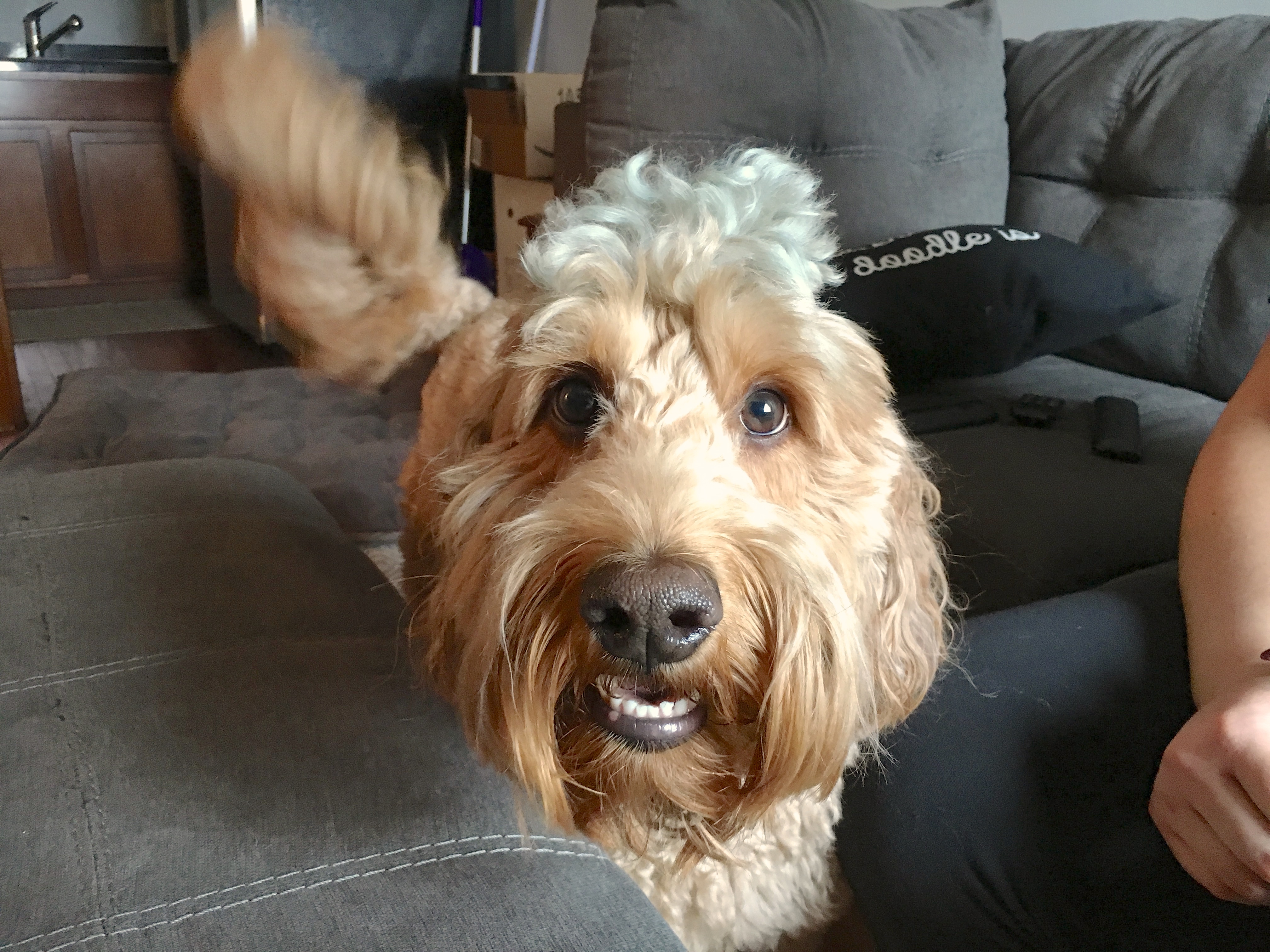Tricks to Train Your Dog to Respect Your Personal Space
By: David Codr
Published Date: May 16, 2017
Tyrone is a three-year-old Goldendoodle who lives in midtown Omaha. His guardian scheduled a dog behavior training session with us to get him to stop getting in his guardian’s personal space, stop barking, stop acting territorially and reacting to other dogs on walks.
Tyrone did some barking when I arrived, but once I stepped inside, his nose took over. His guardian’s instinct to refrain from yelling “no” when he barks was a good one as I explain in the video below.
When we sat down to discuss the situation, Tyrone was all over the place. He pawed at his guardian for attention, climbed on top of her and rumbled around the room a bit like a bull in a china shop.
I knew I was going to have to teach the guardian how to change the leader follower dynamic as Tyrone clearly thought he was in charge and responsible for his human. This is something I see quite a bit as a dog behaviorist. It also most certainly led to stress and anxiety when the human didn’t follow his communications or did things he disagreed with.
This created a vicious cycle of frustration for both human and dog. Over time this can cause a dog to become more reactive. Its also a big contributing factor to his barking, territorial behavior, human reactivity and dog aggression.
After sharing a number of dog training secrets and dog behavior tips, I had the guardian put them into use by claiming her personal space. You can watch her in action in the video below.
Its going to take consistent enforcement of the new rules and boundaries in order for Tyrone to stop trying. He is going to test his guardian’s resolve, but Im confident that she will be able to rise to the challenge.
We finished the session by heading out for a quick walk in the park across the street. Before heading over there I showed his guardian how to add a special twist to a martingale collar to give her more control and some leash training tips.
Because we practiced leashing up Tyrone in a calm way, his behavior was much improved. On our walk, we ran across a few dogs who were doing the same. I coached his guardian through walking them near one another but with enough distance to help Tyrone not feel threatened.
If you have a dog that is reactive, its imperative that you work with the dog when it is calm and this is achieved by making sure the distance or intensity of the thing is low enough for your dog to not react. We call this “sub threshold.”
The more that Tyrone’s guardian assumes the leadership role in their home and helps him learn to stay calm while being leashed up, the less reactive he will be on walks. For some dogs, these changes eliminate the dog’s reactive or aggressive behavior.
If the dog continues to be reactive or displays aggressive or territorial behavior towards other dogs, Tyrone’s guardian should sign him up for our counterconditioning class where we provide a safe environment in which to help a dog build up a positive association towards other dogs.
We finished the session by filming Tyrone’s roadmap to success. You can watch it by clicking the video below.
Categorized in: Dog Behavior


